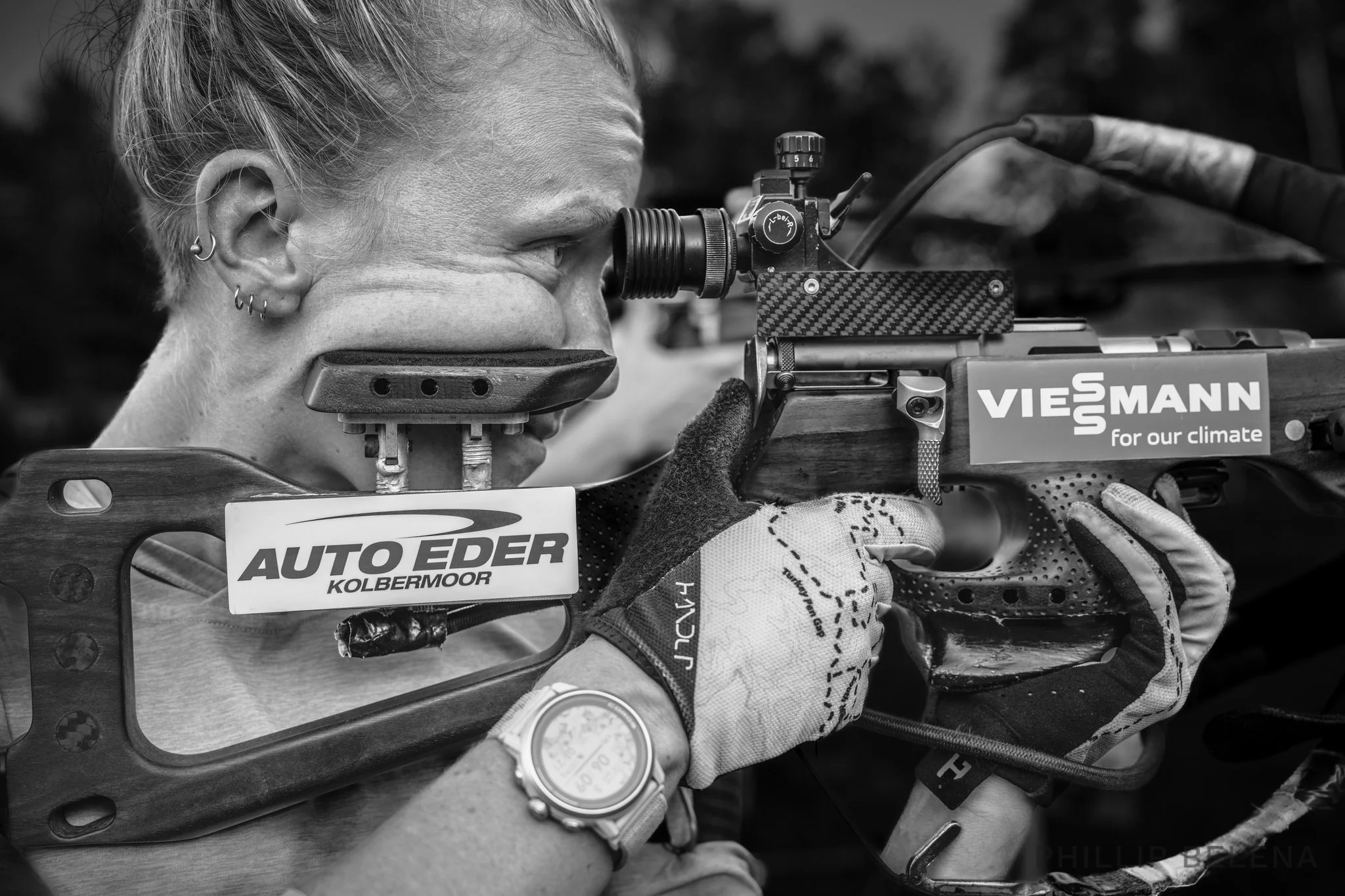Making dryfire a part of your routine
by GRP Biathlete Kelsey Dickinson
Dryfire training is a critical part of shooting training, so why can it be so hard to do regularly? Not only does dryfire help practice and reinforce skills needed for live shooting, but it can also be a cost-effective way to get in more “shots” while not burning through expensive ammunition. In this article, I will share a few ways that I stay motivated to dryfire and my favorite sessions.
Motivation
Break your session into manageable “intervals.” If you want to work on a skill, break that skill down into small pieces, or perform that skill in different ways. Say you want to do 15 minutes of dryfire, you can do 3x5 minutes, 5x3 minutes or even 15x1 minute.
Repeat the shooting you did at practice. If you felt that your shooting session was lacking, or there were specific things you wanted to work on, repeat the same shooting in your dryfire. This is a good time to incorporate some visualization.
Dryfire “warm-up.” Do some dryfire before your range session to practice what you want to work on in training. This will help you have higher quality shots when you are on the range and the skill is fresh in your mind.
Sessions
Holds - Break your 15 minutes up into on-target holds where you get in position and try to hold it for a longer period than you normally would on the range. Repeat in both prone and standing. Holding is a great way to work on positional strength as well as help you diagnose imbalances you might have in position. Start with shorter holds and then work your way up.
Breathing, Bolting and Trigger - Within my “intervals,” I will practice my process first just with breathing and mentally taking 5 shots. Then, the next time I get into position, I will add in bolting as well. Finally, I will breathe, bolt, and trigger. If you want to work on your approach to the target, this is a great way to isolate this skill before adding in other steps of your process.
Squiggle holds - Draw a squiggly line with dots along it that you need to follow in position. When you get to a dot (target) then take a shot. This is also a good way to challenge your position in unstable circumstances and challenge your shot mechanics.
Magazine changes - Want to have a faster range time? Pick a low hanging fruit, like changing your magazines, that can have a dramatic effect on how fast you get into position. I will sit for 5 minutes changing my magazines. Once it feels easy, do it with your eyes closed, or try having a partner distract you.
I hope that these ideas can help you develop a robust dryfire routine as part of your training! I cannot emphasize enough how impactful just 15 minutes 3-4 times a week can have on the quality of your training on the range. Happy training!

